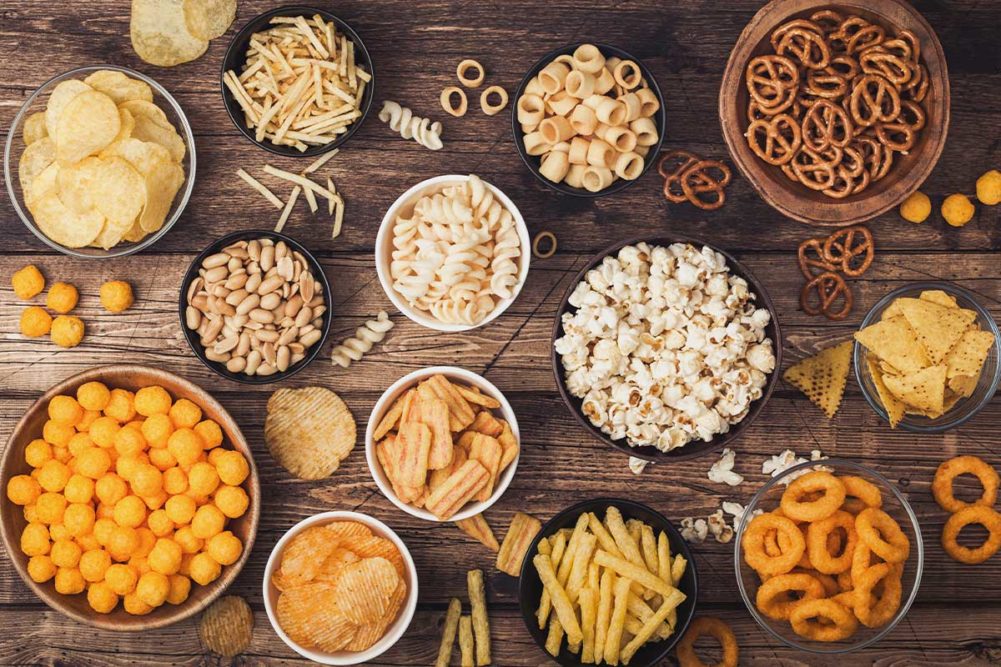ORLANDO, FLA. — Despite the pervasiveness of snacks, there are still plenty of opportunities for growth. Jenny Zegler, director, food and beverage, Mintel, outlined not only the state of snacking but trends for the now, near-future and emerging trends for the further future at SNAC International’s trade show SNAXPO, held March 19-21 in Orlando, Fla.
One of the most significant findings Ms. Zegler shared was the occurrence of snacking in 10 different markets across the world. Consumers from India, Saudi Arabia, the United Kingdom, the United States, Canada and Australia overwhelmingly reported that they snack daily, most likely multiple times a day. Other markets reported a balance between daily and weekly snacking, but Ms. Zegler pointed out that across all markets, the level of consumers reporting not snacking at all was very low.
“It’s only in the single digits the number of consumers who say they don’t snack,” she said. “We can try to win them over, but let’s focus on the fact that most consumers are snacking on a daily or weekly basis.”
To build off this momentum, Ms. Zegler detailed three trends snack companies could act on now, in the next two years and to be aware of for five years from now as they ramp up new product development: Unguilty Pleasures, Savory Sustenance and Staying Sharp.
A trend for today, Unguilty Pleasures speaks to consumers’ desire to indulge without guilt as a way to decompress after the past three years of pandemic, global uncertainty and inflation.
“We’ve been under a lot of pressures for the past three years,” Ms. Zegler pointed out. “47% of US adults report having experienced stress, 39% anxiety and 23% burnout in the past year. They want comfort foods, and they don’t want to feel bad about it.”
Unguilty Pleasures provide snack companies the opportunity to experiment with new textures and flavors within the boundaries of familiar favorites, for example, Lay’s Layers potato chips from Frito-Lay North America, Plano, Texas. These chips offer an interesting new texture to a familiar product: the potato chip. Snack companies can expect to find success in the flavor space with varieties such as beer, hot and spicy, and fruit flavors, Ms. Zegler said.
Ms. Zegler marked Savory Sustenance as a trend snack companies should expect to take off in the next two to five years. This trend speaks to consumers’ need for affordable and accessible food that is filling and nutritious.
“Consumers want trusted nutrition that’s accessible and affordable,” she said. “Companies should stick to straightforward messaging that’s clear to consumers.”
She recommended sticking with concepts consumers are familiar with: macronutrients, vitamins and minerals. Despite this move toward affordable nutrition, however, Ms. Zegler pointed out that taste still drives snack purchases.
“We’ can’t move away from taste as we move toward health,” she explained.
Going even further than affordable nutrition is the third trend Ms. Zegler called out for five years and beyond: Staying Sharp. While Savory Sustenance focuses on macronutrients, vitamins, minerals and nutrient-dense foods, Staying Sharp hones in on brain health. Thirty percent of US adults reported to Mintel that they are not as productive at work as they were a year ago due to mental health strain. Consumers will be looking for foods to help them manage stress, improve cognitive capacity and optimize brain function.
Even more compelling, Mintel found that 32% of consumers who reported buying nut, seed and trail mixes said they would buy more if those products supported brain health. This can include ingredients consumers may not be familiar with like guarana, ashwaganda, ginseng, cordyceps and MCT, but Ms. Zegler, pointed out that snack companies can still draw consumers in with accessible messaging pointing out functional benefits.
While innovation may have stalled during the COVID-19 pandemic, Ms. Zegler reported that data shows new product launches in the snack category are starting to return. And consumers are hungry for new products.
“The amount of variety of snacks and frequency of snacking tempts consumers to try new things,” Ms. Zegler said.






